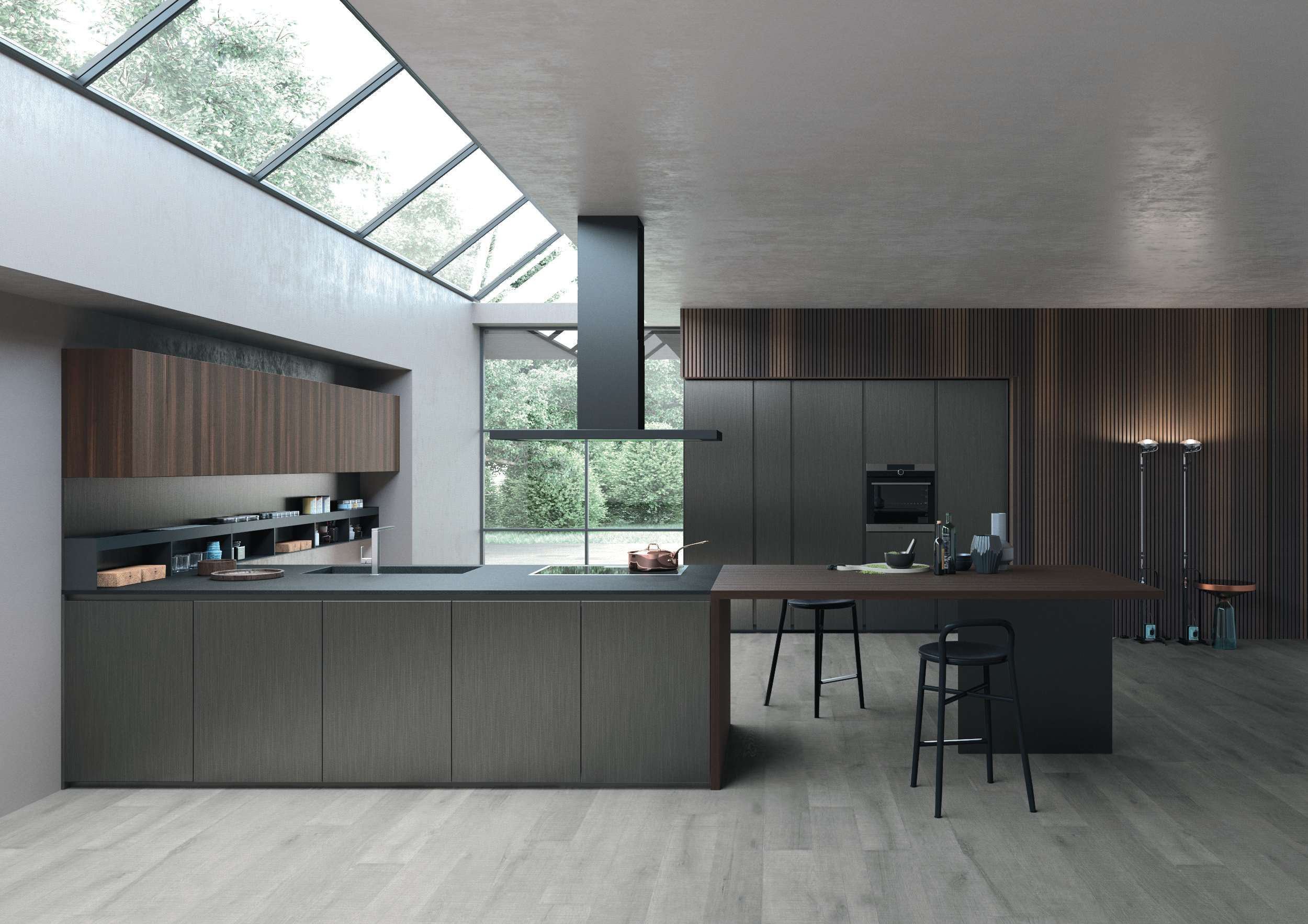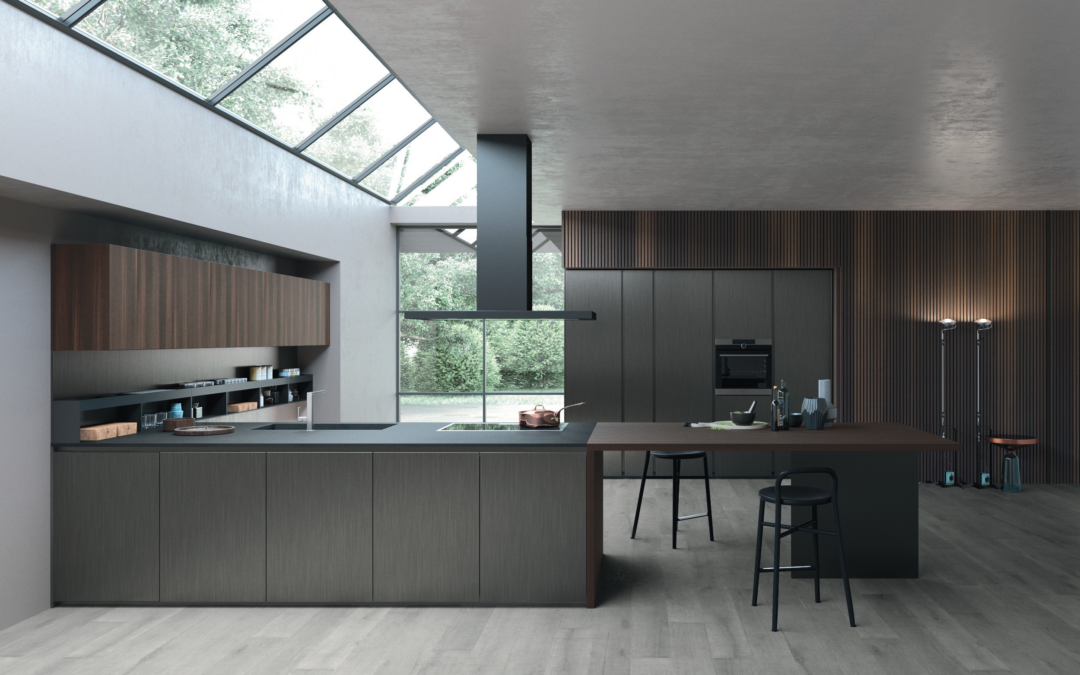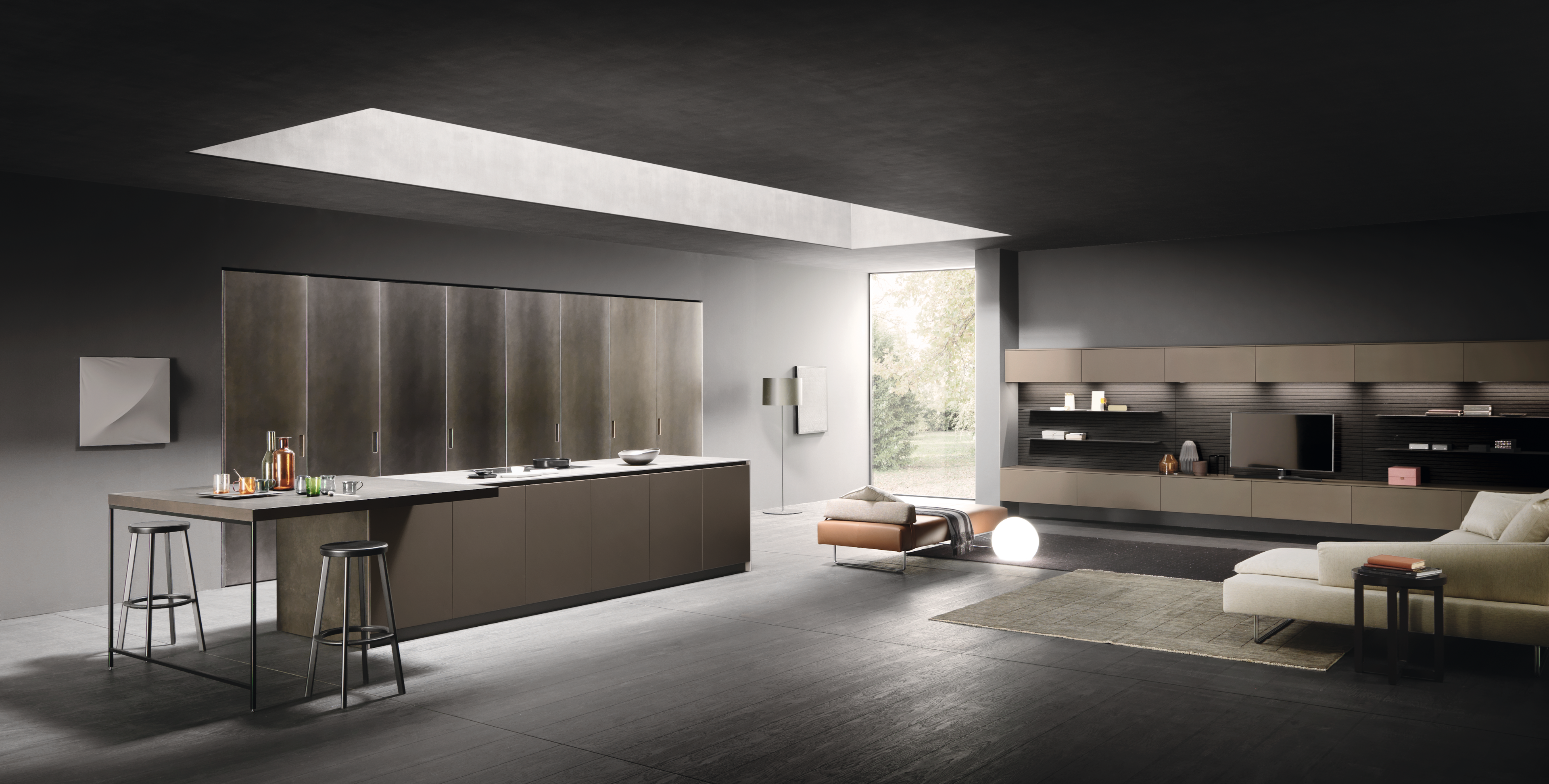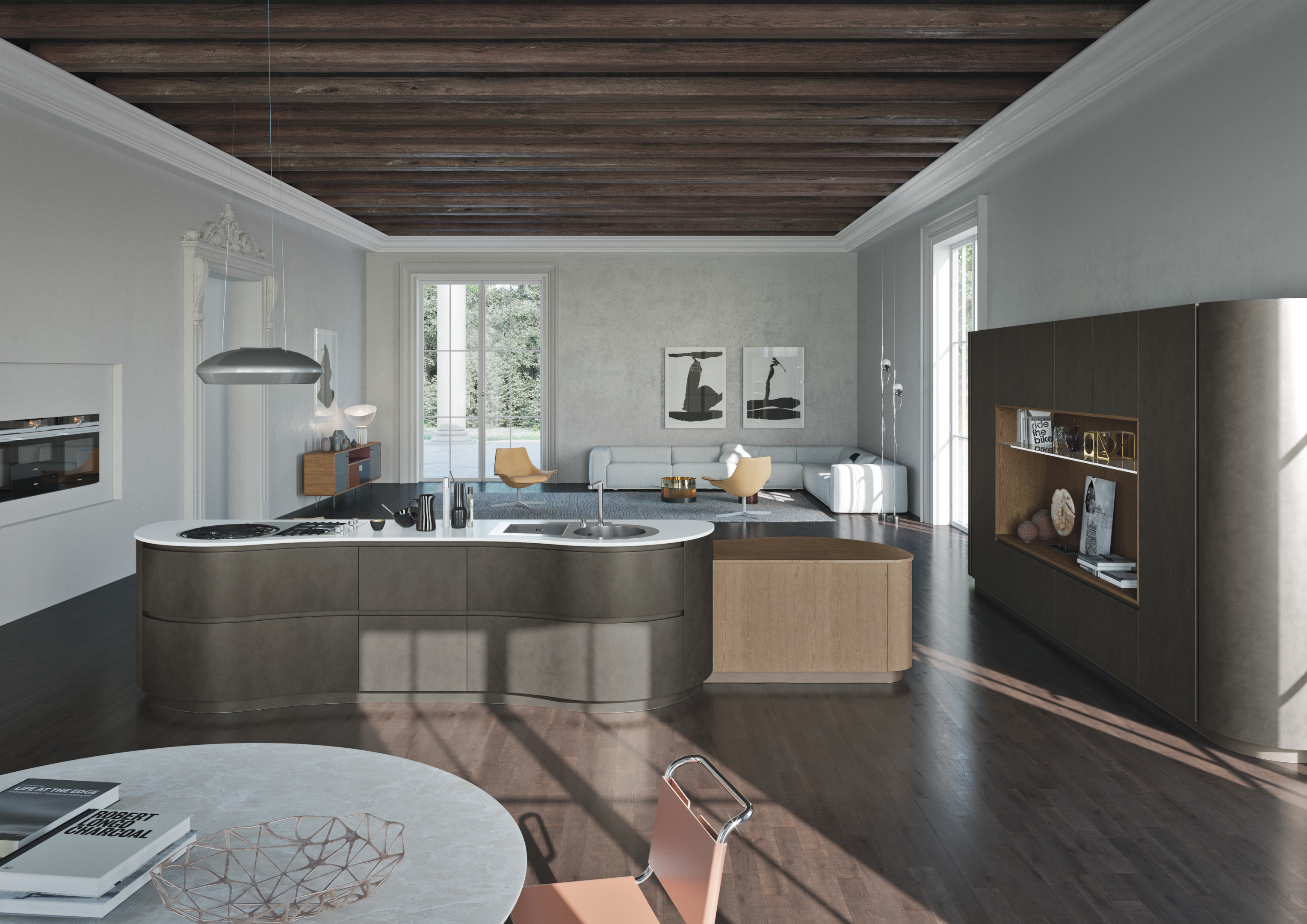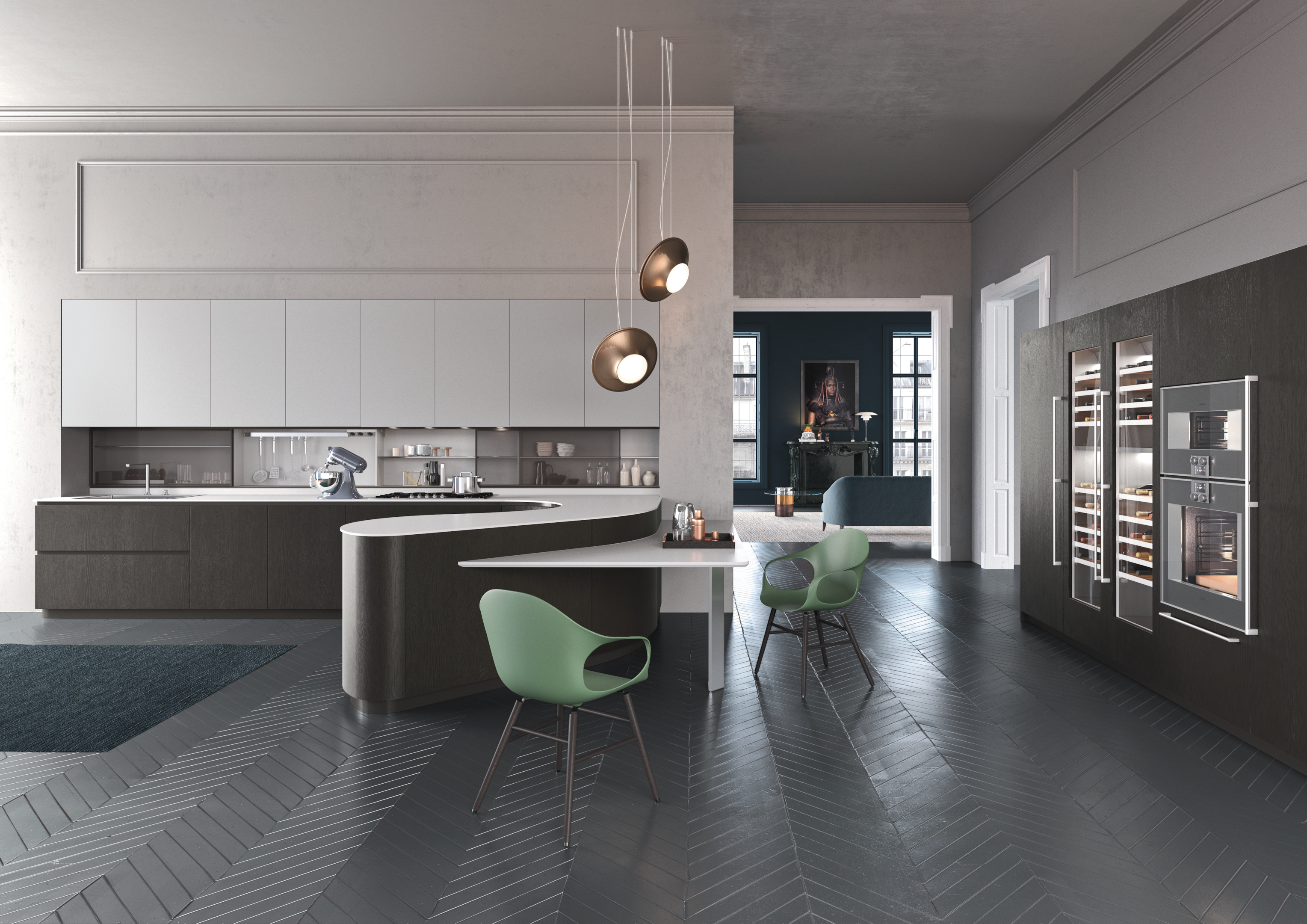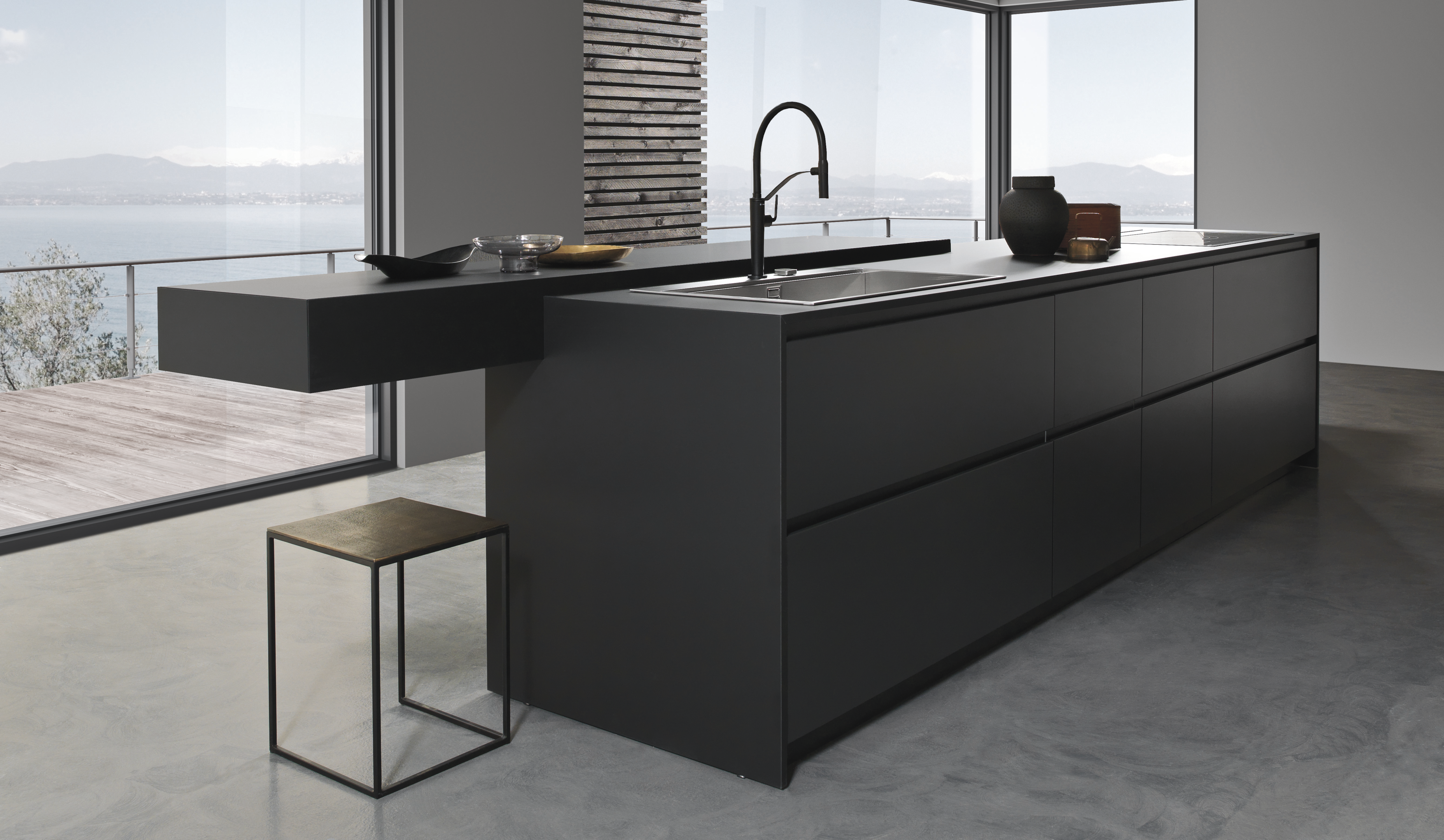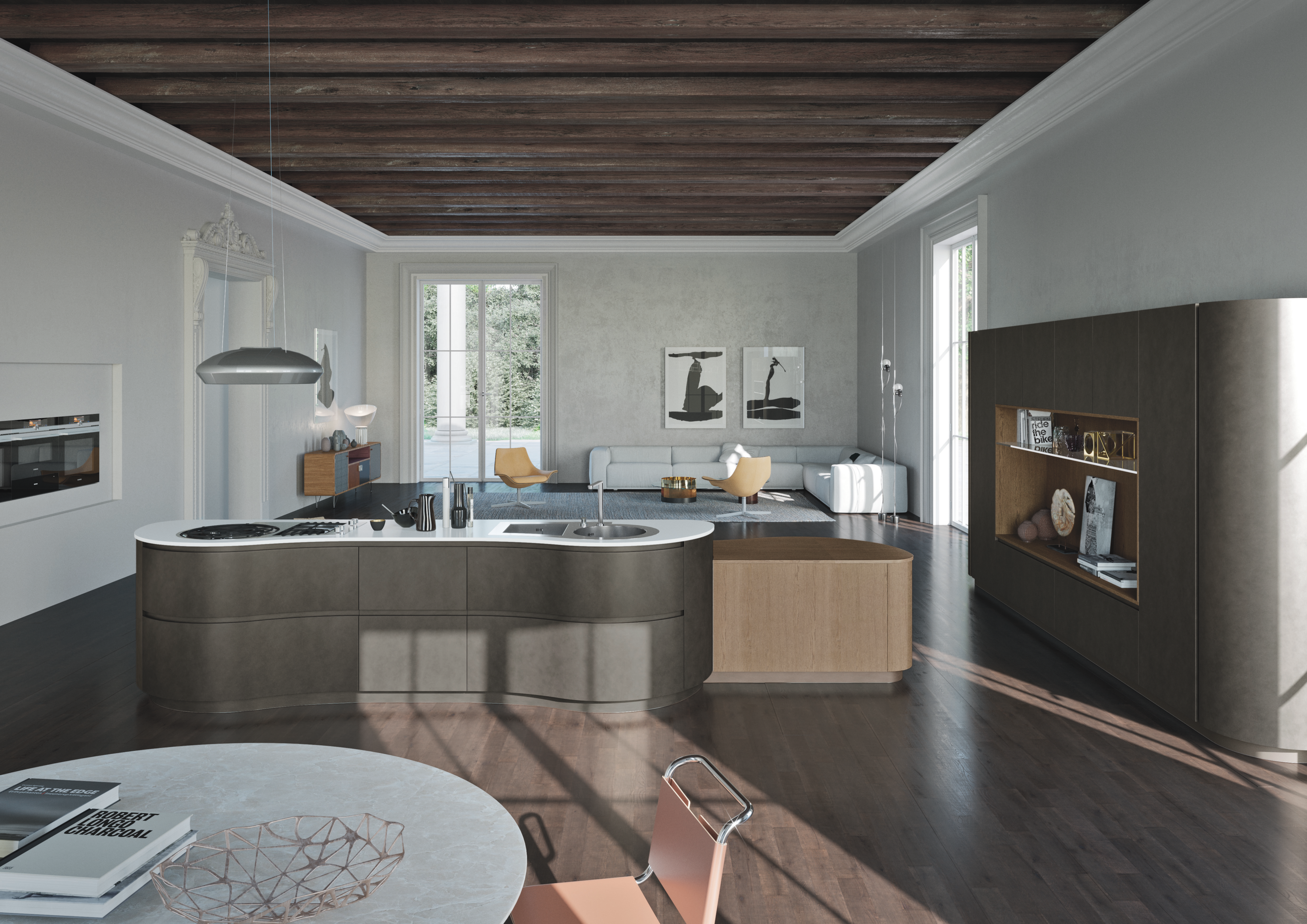15 Luxury Kitchen Design Ideas to Revamp Your Home Decor
In pursuit of a kitchen that exudes luxury and spare-no-expense opulence? Look no further. Luxury kitchen design hinges on three pillars: high-quality materials, the latest technology, and customized features. This article outlines 15 key elements—spanning from elegant marble islands to smart, state-of-the-art appliances—that define the upscale kitchen of your dreams, ensuring your space is as luxurious as it is functional.
Key Takeaways
- Marble is essential in luxury kitchen designs, extending beyond countertops to backsplashes and shelving, enhancing both aesthetics and durability.
- High-end appliances in luxury kitchens offer advanced technology, energy efficiency, and sleek designs, serving as both functional tools and decorative elements.
- Custom lighting solutions in luxury kitchens impact the ambiance and functionality, with options ranging from energy-efficient LED accents to dramatic chandeliers being central to the design.
Marble Masterpieces
Marble, a longstanding symbol of luxury and refinement, is now indispensable in luxury kitchen designs. Revered for its luxurious appeal and enduring quality, marble countertops bring a sense of refined style and durability to any kitchen. But the magic of marble in luxury kitchens doesn’t stop at countertops. It extends to backsplashes, open shelving, and even bold veining patterns that serve as artistic statements, enhancing the overall design aesthetic and texture of the kitchen.
From sleek marble countertops illuminated by natural light streaming through floor-to-ceiling windows, to the intricate veining of marble backsplashes that contrast beautifully against light cabinetry, the elegance of marble comes in many forms. Whether you’re a wine lover looking to add a touch of sophistication to your wine storage area or someone seeking to add an air of luxury to your dining table, the beauty of marble can elevate your kitchen’s aesthetic to new heights. With its unique style and high-quality materials, a marble masterpiece is sure to add an element of extravagance to any luxury kitchen design.
High-End Appliances
In a luxurious kitchen, appliances transcend their practical function and become the crown jewels. The high-end appliance package that defines a luxury kitchen includes:
- The gleam of stainless steel
- The sleek lines of a professional-grade stove
- The state-of-the-art features that transform everyday cooking into a gourmet experience
The latest advancements in technology have given rise to appliances like the Dacor iQ Controller with a touchscreen tablet and WiFi capability, offering features for guided cooking and greener cleaning.
Energy efficiency is another crucial aspect of high-end appliances. Luxury kitchens often feature appliances that bear the ENERGY STAR label, representing both eco-friendliness and cost savings in high-end home design. Furthermore, appliances like the Thermador Star-Sapphire Dishwasher exemplify modern cleaning conveniences with rapid cycles and a customizable kitchen design that includes extra racks and a wine glass caddy. Refrigerators have also evolved, becoming customizable ‘culinary preservation centers,’ offering modular cold storage solutions tailored to personal needs.
So, whether you’re dreaming of your own dream kitchen with custom cabinets that conceal your high-end appliances or a spacious island with a professional-grade stove, remember that the heart of a luxury kitchen lies in its high-end appliances.
Custom Lighting Solutions
Lighting possesses the transformative power to turn a beautiful kitchen into an enchanting one. In luxury kitchens, lighting has a dramatic impact on both the ambiance of the space and the performance of tasks, requiring careful placement and selection of fixtures. Imagine the beauty of LED-lit glass counter edges in a modern kitchen, not only reducing energy use but also enhancing the luxurious feel of the space.
But the magic of custom lighting doesn’t stop at utility. It extends to aesthetics, with opulent chandeliers and pendant lights serving as centerpieces in luxury kitchens. For example, the hand-cast-glass chandelier in a Milanese kitchen by Hannes Peer adds to the high-end feel of the space. And let’s not forget about sculptural lighting, like custom plaster pendants or bold, nostalgic fixtures, which can infuse a luxury kitchen with an elegant and inviting ambiance.
Whether it’s the subtle glow of toe-kick lighting or the dramatic effect of a statement chandelier, custom lighting can illuminate your luxury kitchen in more ways than one.
Innovative Storage Solutions
Within luxury kitchen designs, storage solutions surpass practicality, becoming innovative and aesthetically pleasing components. Modern luxury kitchens are opting for storage solutions that maintain a minimalist and uncluttered look, such as:
- Hidden drawers
- Integrated step stools
- Appliance garages with bifold or roller doors that match the surrounding cabinetry
- Custom-built areas to conceal appliances within a green lacquered box
These are examples of innovative storage in luxury kitchens, showcasing various luxury kitchen ideas.
These hidden and minimalist storage solutions provide seamless access to everyday kitchen appliances, ensuring easy functionality while preserving an elegant appearance. Moreover, a significant shift towards drawers instead of traditional lower cabinets is noticeable as they provide easier access and better organization of kitchen items.
So, whether you’re a fan of open shelving or prefer hidden pantries, innovative storage solutions can help transform your luxury kitchen into a functional and organized haven.
Exquisite Luxury Kitchen Islands
Kitchen islands, once mere counter spaces, have evolved into architectural focal points in luxury homes. They serve as multi-functional spaces for meal preparation, casual dining, and additional storage, and may include innovative designs like a perpendicular island or dual islands for prep and dining. The beauty of the kitchen island lies in its versatility and ability to transform the kitchen space into a hub for social interaction.
Luxury kitchen islands showcase a range of unique materials, such as Pompeii stone, stainless steel paired with walnut, contrasting marble countertops with black dining tables, shiny brass that patinates over time, and statement pieces made from Bianco Gioia marble. The design of a kitchen island should be based on its intended use, focusing on sitting, storage, or meal preparation, while also considering style elements—matching or contrasting with cabinetry to establish the desired aesthetic and incorporating islands on wheels for additional flexibility.
With options ranging from custom built to prefabricated, and even do-it-yourself projects, there’s a kitchen island solution tailored to different spaces, needs, and budgets.
Bold Color Schemes
A kitchen’s aesthetic appeal and ambiance can be drastically influenced by its color scheme. Luxury kitchens are increasingly incorporating high-contrast color schemes to create striking visual appeal and reflect the homeowner’s unique style. Some popular color schemes include:
- The classic combination of black and white, offering a backdrop for accents and textures, and providing a chic and bold atmosphere.
- Neutral tones such as beige, gray, and cream, creating a timeless and elegant look.
- Bold and vibrant colors like red, blue, or green, adding a pop of color and personality to the space.
These color schemes can help create a beautiful and stylish kitchen that suits your taste and preferences.
Contemporary kitchens often feature deep shades like navy or deep grey combined with light neutrals, or taupe and blue cabinets to create a luxurious feel. Achieving a harmonious look involves balancing high-contrast colors, with one color serving as the dominant base and the contrasting color as an accent. This balance can be seen in kitchens designed by Martyn Lawrence Bullard with custom green cabinetry and in homes using Cambria Swanbridge surfaces.
Whether you prefer earthy tones or vibrant hues, a bold color scheme can give your luxury kitchen a unique character and charm.
Luxury Kitchen Cabinetry Design Ideas
The floor-to-ceiling cabinetry trend in luxury kitchen design offers several benefits:
- Repurposes unused space into additional storage
- Houses less frequently used items such as seasonal dishware on higher shelves
- Custom panels on appliances can be designed to match cabinetry, fostering a seamless kitchen design aesthetic.
Glass-paneled doors on the upper sections of cabinetry provide a display space for decorative items without collecting dust. Full-height cabinets draw the eye upward, enhancing the perception of space and making the kitchen appear taller and more spacious. Plus, the utilization of floor-to-ceiling cabinetry eliminates the common dust accumulation found on top of shorter cabinets, contributing to cleaner kitchen surfaces. Cabinet hardware, such as handles and knobs, can also play a role in the overall aesthetic of your kitchen.
So, whether you’re a fan of white cabinets, wood cabinetry, or prefer the sophisticated look of dark cabinets, floor-to-ceiling custom cabinetry can add an element of elegance to your luxury kitchen.
Integrated Dining Spaces
The kitchen transcends its traditional role as a place for cooking, becoming a space for dining, socializing, and creating memories. Built-in blue leather breakfast nooks and banquettes that form from the back of large kitchen islands are key bespoke features in luxury kitchen designs. An open plan layout, with a separate space dedicated for dining, creates a cohesive environment for cooking and social interactions, making it a dream kitchen.
Multipurpose dining elements such as a large central wood table or a dining nook can add sophistication and serve as the kitchen’s focal point for family gatherings. A farmhouse sink, sideboard units that echo the kitchen’s design themes unify the kitchen and dining areas visually and also contribute additional storage solutions.
So, whether you’re preparing meals for a dinner party or enjoying casual meals with family, integrated dining spaces can enhance the functionality and sociability of your luxury kitchen.
Unique Backsplash Designs
Beyond being a practical element that protects your kitchen walls, a backsplash serves as a canvas for expressing your unique style. Luxury kitchens often feature stainless steel backsplashes, offering a sleek and modern look that complements metallic accents like faucets and light fixtures. But the beauty of backsplash designs lies in their versatility. The use of materials such as Moroccan zellige tiles and designs like the herringbone pattern can add depth and character to kitchen backsplashes.
Even a French Country kitchen design may include a unique blue and white backsplash, adding color and pattern to the elegance of the space. Whether you prefer the sleek look of stainless steel or the intricate patterns of Moroccan tiles, unique backsplash designs can elevate the aesthetic appeal of your luxury kitchen.
Statement Range Hoods
Beyond their practical role of ventilating your kitchen, range hoods can serve as statement pieces that showcase your unique style. A diverse selection of materials is available for statement range hoods, including plaster, brass, and wood, with the ability to add distinctive features such as rivets, trims, or integrated lighting.
But aesthetics shouldn’t compromise functionality. Statement range hoods should also offer optimal functionality, with options for intelligent extractor hoods equipped with sensors for adjusting ventilation speed and air filtration systems to ensure air quality. Whether you prefer the rustic charm of a wood range hood or the sleek elegance of a plaster hood, statement range hoods can add personality and flair to your luxury kitchen.
Luxurious Flooring Options
Your kitchen flooring significantly influences its overall aesthetic appeal and comfort. Hardwood flooring, offered in a variety of colors and styles, enhances the elegance of kitchens and can be refinished to revitalize its appearance. Alternatively, luxury vinyl plank flooring closely resembles real hardwood, adding to the opulence of kitchen design with added durability and moisture resistance.
Natural stone tiles offer a prestigious look with a variety of options like slate, quartzite, granite, and travertine, each presenting unique patterns and a low-maintenance surface for luxury kitchens. Other sustainable options include stained concrete floors, customizable in appearance to resemble wood, stone, or tile, and bamboo flooring, a durable, water-resistant option that competes with hardwood. With a multitude of luxurious flooring options to choose from, you can select the perfect one that suits your style and comfort.
Eco-Friendly Luxury Kitchens
In the modern world, sustainability has evolved from a trend into a lifestyle. Luxury kitchens are prioritizing sustainability by utilizing materials like FSC-certified wood and bamboo for cabinetry, along with recycled materials like glass for countertops. Low-VOC finishes on kitchen surfaces contribute to healthier indoor air quality, providing an important aspect of eco-friendly luxury kitchen design.
Flooring options like linoleum, a popular eco-friendly alternative, offer sustainability with its diverse colors and patterns and easy maintenance. Cork flooring offers a renewable option that is sound-absorbent and can emulate hardwood or stone aesthetics, although it requires protection from water and direct sunlight.
Eco-conscious kitchens are also incorporating systems for waste reduction and recycling, with specific areas designed for composting and sorting recyclables. So, if you’re passionate about sustainability, know that you can create a luxury kitchen that is not only beautiful but also environmentally conscious.
Indoor-Outdoor Connectivity
The allure of a luxury kitchen extends beyond its interior design to its connection with the outdoor space. Incorporating large glass walls and walk-out kitchens with wall-size glass doors in the design maximizes views and allows natural light to flood the space, enhancing the indoor-outdoor experience. The use of consistent flooring materials and folding door systems can enable a fluid connection between the kitchen and outdoor spaces, transforming separate areas into a cohesive living space.
The design of luxury kitchens with adjacent covered patios, French doors, and features like pass-through windows facilitates socialization and a blend of indoor-outdoor utility and pleasure. Some key design elements include:
- Pocket glass walls that retract completely, offering unobstructed views and an open feeling
- Walk-out access to yards and outdoor bars
- Connectivity between indoor and outdoor spaces
These features exemplify the trend of connectivity in modern luxury kitchens, creating a seamless transition between indoor and outdoor living.
So, whether you’re hosting a summer cookout or enjoying a quiet morning coffee, indoor-outdoor connectivity can enhance your luxury kitchen experience.
Artful Accents
Artful accents have the power to infuse your luxury kitchen with personality and flair. Modern luxury kitchen designs often integrate Art Deco decor, adding an artistic and unique flair to the space. Curated collections can enhance the sophistication of a luxury kitchen, with each chosen piece contributing to the overall elegance and style of the space, exemplified by statement wine storage within sleek cabinetry.
Toe-kick lighting is an elegant way to add a unique touch to a kitchen, providing a soft glow that enhances the room’s ambiance without the need for bright overhead lights. Sculptural pendant lighting and high-contrast design elements, such as a black metal grid glass door and black and white check flooring, add personality and a dramatic flair to luxury kitchens.
So, whether you’re a fan of Art Deco decor or prefer the subtle glow of toe-kick lighting, artful accents can add an artistic touch to your luxury kitchen.
Smart Kitchens
Luxury kitchens of the future are bound to be driven by smart technology. Imagine a kitchen where appliances like ovens and refrigerators can be managed remotely via mobile devices, and entire home automation systems allow for voice-controlled assistance. Voice-activated smart taps and sinks dispense water at the desired temperature or quantity, providing a seamless cooking experience, especially when dealing with messy or full hands.
Connected smoke and carbon monoxide sensors improve kitchen safety by sending immediate alerts to smartphones or other devices in case of emergencies. The incorporation of energy-efficient smart appliances and thermostats underscores a commitment to sustainability without compromising luxury or convenience. So, if you’re a tech enthusiast, know that you can revolutionize your cooking experience with a smart kitchen that offers convenience, sustainability, and seamless control.
Summary
From marble masterpieces and high-end appliances to smart kitchens and eco-friendly designs, luxury kitchens offer a world of possibilities. They are a perfect blend of beauty and functionality, where every detail is thoughtfully considered to create a space that is not only aesthetically pleasing but also practical. Whether you prefer the timeless elegance of marble countertops, the sleek sophistication of high-end appliances, or the cutting-edge technology of smart kitchens, remember that the beauty of a luxury kitchen lies in its ability to reflect your unique style and personality.
Frequently Asked Questions
What are some popular materials used in luxury kitchen islands?
Luxury kitchen islands often feature Pompeii stone, stainless steel paired with walnut, contrasting marble countertops, shiny brass, and statement pieces made from Bianco Gioia marble, all of which add an elegant touch to the space.
How can I create a high-contrast color scheme in my kitchen?
To create a high-contrast color scheme in your kitchen, use one color as the dominant base and a contrasting color as an accent, such as a classic black and white pairing or deep shades like navy combined with light neutrals. This approach helps to achieve a visually striking and impressive result.
What are some eco-friendly materials used in luxury kitchens?
Some eco-friendly materials used in luxury kitchens are FSC-certified wood, bamboo, recycled glass, linoleum, and cork, offering sustainable and stylish options for an environmentally conscious kitchen.
How can I enhance the indoor-outdoor connectivity of my kitchen?
To enhance the indoor-outdoor connectivity of your kitchen, consider incorporating large glass walls, walk-out kitchens with wall-size glass doors, and consistent flooring materials to create a seamless connection between the indoors and outdoors.
What are some features of a smart kitchen?
A smart kitchen includes appliances that can be controlled remotely, such as ovens and refrigerators, voice-activated taps and sinks, connected smoke and carbon monoxide sensors, and energy-efficient appliances and thermostats. These features offer convenience and efficiency in the kitchen.

